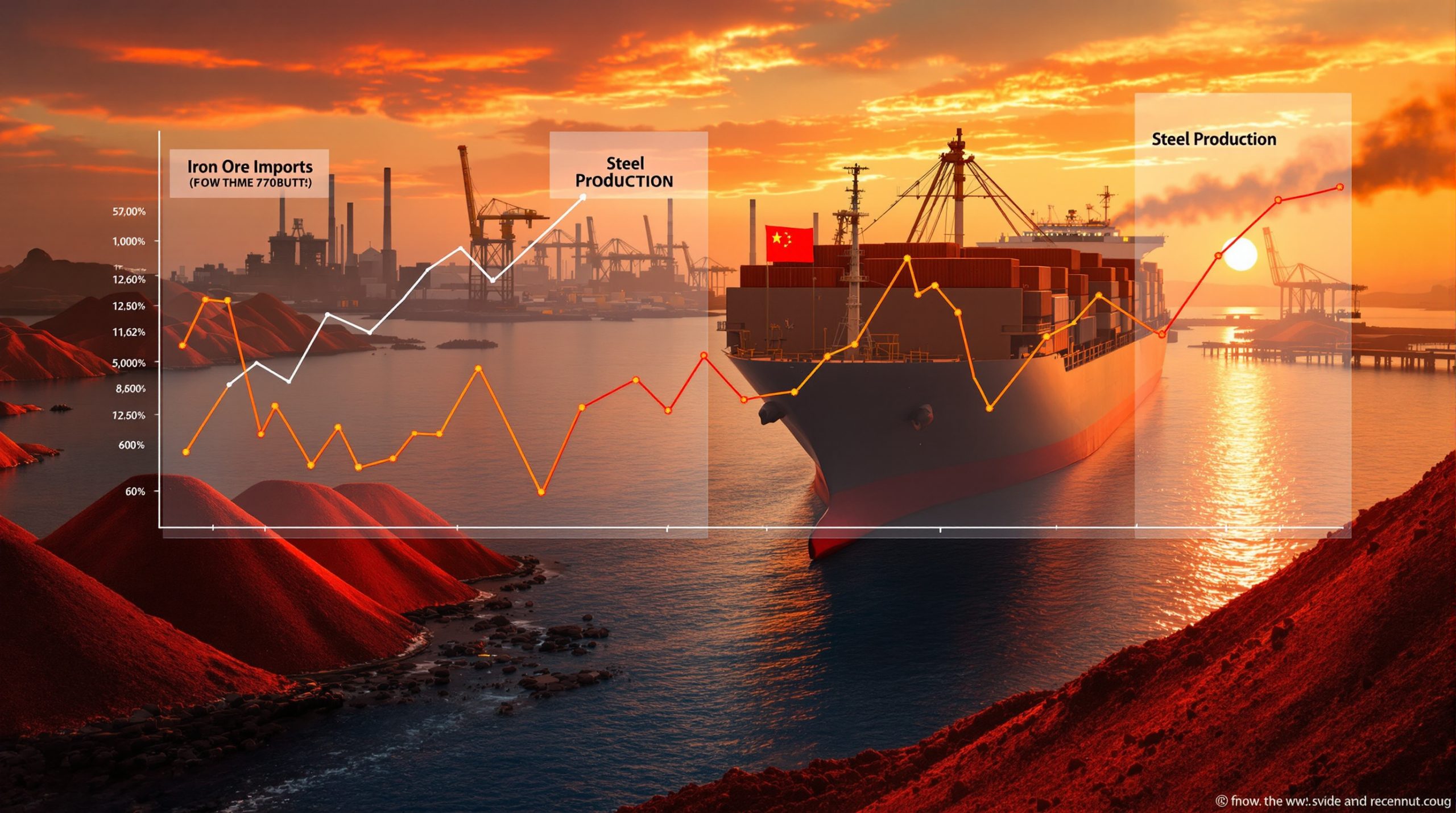How to Analyze Mineral Resources Quarterly Reports: A Comprehensive Guide
Quarterly reports from mining companies provide crucial insights into operational performance, financial health, and strategic direction. For investors and analysts focusing on companies like Mineral Resources Limited (ASX: MIN), these reports serve as vital tools to evaluate progress and potential before annual reports are released. A thorough understanding of how to analyze these documents can give you a competitive edge in the resources sector.
What is a Mineral Resources Quarterly Report?
A quarterly report from mining companies provides a snapshot of performance across multiple divisions and projects. These reports typically include production volumes, shipment figures, realized commodity prices, operational updates, and financial data like liquidity positions and net debt.
Mining quarterly reports follow a different cadence than standard financial reports, often aligned with production seasons rather than calendar quarters. For companies like Mineral Resources, these reports reveal crucial operational metrics across iron ore, lithium, mining services, and energy divisions.
Key components typically include:
- Production and shipment volumes by commodity and mining hub
- Average realized prices for each commodity
- Updates on major project developments and milestones
- Operational challenges and mitigations
- Guidance adjustments for the remainder of the fiscal year
- Liquidity and debt position summaries
"Quarterly reports provide early warning signals about operational challenges that might not be immediately apparent in financial statements alone." – Mining Analyst Association
Why Are Quarterly Reports Important for Mining Investors?
Quarterly reports offer a timely snapshot of a mining company's performance across multiple divisions and projects. They provide early indicators of trends, highlight potential challenges, and showcase growth opportunities before annual reports are released.
The mining sector's uniqueness lies in its exposure to commodity price volatility, operational risks, and capital-intensive nature. Quarterly updates help investors assess how companies navigate these challenges. For example, Mineral Resources Limited experienced a 12.8% stock price surge following its Q3 FY25 report release, demonstrating how market dynamics explained can influence share prices.
Key Benefits of Analyzing Quarterly Reports
- Early detection of operational issues or improvements
- Insight into commodity price impacts on revenue
- Visibility into project development timelines
- Understanding of management's strategic priorities
- Assessment of financial stability and liquidity
Mining companies often revise production guidance based on quarterly performance, making these reports essential for forward-looking investment decisions. By comparing production volumes against previous guidance, investors can gauge management's forecasting accuracy and operational consistency.
How to Read Production Metrics in Mining Reports
Production metrics form the foundation of any mining quarterly report analysis. These figures reveal not just volumes but efficiency, cost management, and operational health across different mining hubs.
Understanding Production Volumes
-
Wet Metric Tonnes vs. Dry Metric Tonnes: Mining reports distinguish between wet metric tonnes (wmt) and dry metric tonnes (dmt), with the difference being moisture content. Understanding this distinction is crucial as companies sell products based on dry weight, while production volumes may be reported in wet tonnes.
-
Production vs. Shipment Figures: The gap between production and shipment volumes can indicate logistical challenges or strategic inventory management. For example, a 6 million wmt production versus 5.9 million wmt shipment suggests approximately 1.7% moisture content differential (assuming standard 8.5% moisture in wmt).
-
Quarter-over-Quarter Comparisons: Analyzing sequential quarterly changes helps identify operational momentum. Consistent improvements signal operational efficiency, while volatility may indicate underlying challenges.
Interpreting Price Realizations
-
Average Realized Price: This figure shows what a company actually receives for its commodities, often reported in USD per tonne. In Mineral Resources' case, their iron ore division achieved a US$89/dmt average price in Q3 FY25, representing a 6% increase quarter-over-quarter.
-
Price Premiums or Discounts: Quality differences can lead to pricing variations compared to benchmark indices. Higher-grade products typically command premiums, while impurities result in discounts.
-
Price Trend Analysis: Comparing realized prices across quarters reveals market positioning and contract effectiveness. Stability amid volatile benchmark prices suggests effective hedging or favorable long-term contracts.
What to Look for in Iron Ore Division Reports
Iron ore typically represents a significant revenue source for diversified miners. Understanding the nuances of iron ore operations requires attention to production consistency, price achievement, and infrastructure utilization.
Production and Shipment Analysis
-
Hub-by-Hub Performance: Major producers typically report production from multiple mining hubs. Mineral Resources operates both Pilbara Hub and Onslow Iron operations, with combined production of 6 million wmt in a recent quarter.
-
Weather Impact Assessment: Seasonal factors, particularly cyclones in regions like the Pilbara, can significantly affect quarterly results. These disruptions are often temporary but may impact short-term guidance.
-
Infrastructure Utilization: Port and rail capacity utilization rates indicate operational efficiency. Management updates on port upgrades are critical to achieving capacity targets, as highlighted in Mineral Resources' strategy to reach 35Mtpa capacity at Onslow Iron.
Guidance Adjustments
-
Revision Patterns: Frequent downward revisions may signal operational challenges. Mineral Resources revised Onslow Iron's FY25 output from 8.8–9.3Mt to 8.5–8.7Mt due to weather disruptions, illustrating how external factors can impact targets.
-
Explanation Quality: Comprehensive explanations for guidance changes demonstrate management transparency. Vague justifications may signal deeper issues.
-
Seasonal Adjustments: Understanding how companies adjust for predictable seasonal variations shows planning capability and operational resilience.
Mining Expert Insight: "Iron ore producers with captive logistics infrastructure maintain more consistent shipment schedules during weather disruptions compared to those reliant on third-party rail and port access."
How to Evaluate Lithium Operations in Quarterly Reports
The lithium sector's rapid growth and price volatility make quarterly updates particularly valuable for investors. These reports provide insights into production efficiency, market positioning, and strategic partnerships.
Concentration Grades and Recovery
-
SC6 Equivalent Production: Spodumene concentrate with 6% lithium oxide content is the standard reporting metric. Mineral Resources reported 133,000 dmt attributable spodumene production across Wodgina and Mt Marion operations.
-
Recovery Rates: Higher recovery percentages indicate more efficient processing. Technological improvements in recovery can significantly enhance project economics without increasing mining volumes.
-
Grade Variations: Changes in ore grade can significantly impact production costs and volumes. Consistent grades suggest ore body stability, while fluctuations may indicate selective mining practices or geological challenges.
Market Position Indicators
-
Price Achievement vs. Spot Market: Comparing realized prices to spot market rates shows contract quality. Mineral Resources achieved an SC6-equivalent price of US$844/dmt (+2% QoQ) while mixed-grade products averaged US$685/dmt (-2% QoQ), demonstrating the premium for higher-grade material.
-
Customer Diversification: Reports may indicate the geographic distribution of customers. Mineral Resources maintains a diversified customer base with no single buyer exceeding 15% of lithium shipments, reducing concentration risk.
-
Downstream Integration: Progress in vertical integration strategies can significantly enhance margins and market positioning. Companies expanding into battery material production often command higher valuations.
What Mining Services Metrics Reveal About Operational Health
Mining services divisions provide insight into operational capabilities beyond commodity production. These segments often deliver more stable cash flows and can offset volatility in commodity-linked divisions.
Volume and Efficiency Trends
-
Total Material Moved: This metric indicates overall operational scale and equipment utilization efficiency.
-
Site-Specific Performance: Variations across different mining sites can highlight operational strengths or weaknesses. Consistent site-by-site reporting allows for trend analysis.
-
Equipment Utilization Rates: Higher utilization suggests operational efficiency and disciplined capital management. Modern mining operations track equipment utilization digitally, enabling precise optimization.
Contract Retention and Growth
-
New Contract Announcements: Expansion of service contracts indicates business growth and market confidence.
-
Contract Renewal Rates: High renewal percentages suggest service quality and competitive pricing. Long-term contract extensions typically signal client satisfaction.
-
Margin Trends: Changes in service margins reflect competitive positioning and cost management effectiveness. Declining margins may indicate pricing pressure or operational inefficiencies.
How to Assess Energy Division Developments
Energy divisions often represent growth vectors for diversified mining companies. These segments can provide operational synergies and portfolio diversification benefits.
Exploration and Development Milestones
-
Well Testing Results: Technical success indicators from exploration activities provide early validation of resource potential.
-
Certification Progress: Advancement toward reserves certification demonstrates project maturity and derisking. This process involves independent verification of resource quality and quantity.
-
Infrastructure Development: Progress on energy-related infrastructure indicates investment commitment and project advancement toward commercialization.
Strategic Direction Indicators
-
Energy Mix Evolution: Changes in focus between conventional and renewable energy reflect long-term strategic positioning.
-
Integration with Mining Operations: Synergies between energy production and mining activities can deliver significant cost advantages, particularly for remote operations.
-
Regulatory Milestone Achievements: Securing necessary permits and approvals reduces development risk and confirms project viability.
What Financial Metrics Matter Most in Mining Quarterly Reports?
Financial health indicators provide context for operational performance and future development capacity. These metrics reveal management's capital allocation priorities and financial discipline.
Liquidity and Debt Analysis
-
Cash Position Trends: Quarter-over-quarter changes in cash holdings indicate operational cash generation and capital expenditure discipline. Mineral Resources reported liquidity of $1.25 billion, including $450 million cash and an $800 million undrawn credit facility.
-
Debt Structure: Distribution between short-term and long-term debt obligations reveals refinancing requirements and financial flexibility. Approximately 20% of Mineral Resources' $5.4 billion debt is short-term, according to annual report disclosures.
-
Undrawn Facilities: Available credit facilities indicate financial flexibility for opportunistic growth or weathering downturns. This "financial headroom" is particularly important in capital-intensive mining operations.
Cost Management Indicators
-
Workforce Adjustments: Changes in employee numbers often signal cost restructuring. Mineral Resources implemented significant workforce reductions, cutting 1,740 roles year-over-year as part of efficiency measures.
-
Unit Cost Trends: Cost per tonne metrics show operational efficiency and competitive positioning within the industry cost curve.
-
Capital Expenditure Patterns: Spending discipline versus growth investment balance reveals management's confidence in market conditions and project returns.
"In mining, cost leadership is more sustainable than price leadership, as commodity prices remain beyond individual company control." – Resources Investment Forum
How to Evaluate Corporate Governance Updates
Corporate governance quality significantly impacts long-term investment performance in the mining sector. Quarterly reports often contain subtle indicators of governance direction and quality.
Board Composition Changes
-
Director Turnover Patterns: Frequent changes may indicate governance instability. Mineral Resources reported three non-executive directors resigned with chair succession planned for the June quarter.
-
Expertise Alignment: New appointments should align with strategic challenges. The mining sector increasingly requires ESG expertise alongside traditional mining and financial experience.
-
Independence Metrics: Ratio of independent to executive directors indicates governance quality. Post-resignations, Mineral Resources' independent director ratio fell to approximately 40%, below the ASX Corporate Governance Council's 50% recommendation.
Governance Reform Initiatives
-
Policy Updates: Changes to governance frameworks and policies often follow external pressure or identified weaknesses.
-
Stakeholder Engagement: Evidence of responsiveness to investor concerns demonstrates shareholder alignment. Mineral Resources' governance challenges insights have been documented in previous shareholder meetings.
-
Transparency Improvements: Enhanced disclosure practices indicate governance maturity and commitment to shareholder communication.
What Market Reactions Tell Us About Report Quality
Market responses to quarterly reports provide external validation of information significance and company trajectory. These reactions incorporate broader market expectations and sentiment.
Share Price Movements
-
Immediate Response: Day-of-release price movements indicate initial market interpretation. Mineral Resources experienced a 12.8% stock price increase following its Q3 FY25 report release, reaching $20.59 per share.
-
Volume Analysis: Trading volume spikes suggest information significance and market reappraisal of company prospects.
-
Comparative Performance: How the stock performs relative to sector peers following the report reveals market perception of relative competitive positioning.
Analyst Revisions
-
Consensus Changes: Shifts in analyst recommendations after quarterly reports validate information significance and trajectory change.
-
Target Price Adjustments: Magnitude and direction of price target changes reflect reassessment of future value potential.
-
Earnings Estimate Revisions: Changes to future earnings projections incorporate new operational information into financial forecasts.
How to Create Your Own Quarterly Report Analysis Framework
Developing a systematic approach to quarterly report analysis enhances consistency and comprehensiveness. This framework should balance quantitative and qualitative elements.
Step-by-Step Evaluation Process
- Compare results against previous guidance
- Identify significant deviations from market expectations
- Assess management's explanations for variances
- Evaluate forward guidance credibility
- Compare performance across divisions
Key Questions for Thorough Analysis
- Has the company met its production targets across all divisions?
- Are realized prices trending favorably compared to market benchmarks?
- Is the company maintaining or improving its cost position?
- Does the financial position support stated growth ambitions?
- Are governance changes addressing investor concerns effectively?
FAQ: Mining Quarterly Report Analysis
What are the most important metrics to track in a mining company's quarterly report?
Production volumes, realized commodity prices, unit costs, capital expenditure, and net debt position typically provide the most comprehensive view of operational and financial performance. For diversified miners like Mineral Resources, comparative divisional performance also reveals portfolio strength.
How can seasonal factors affect quarterly mining reports?
Weather events like cyclones in Western Australia can disrupt production and shipping. Understanding regional seasonal patterns helps contextualize quarterly fluctuations versus underlying trends. Mineral Resources specifically cited weather-related disruptions affecting Onslow Iron's guidance adjustment.
What indicates a high-quality mining quarterly report?
Transparent disclosure, comprehensive operational details, clear explanations for variances, consistent reporting formats, and realistic forward guidance are hallmarks of quality reporting. Reports that address challenges directly rather than obfuscating them typically indicate management integrity.
How do commodity price movements between quarters affect report interpretation?
Price movements can mask underlying operational performance. Analyzing volume metrics separately from revenue figures helps isolate true operational efficiency from market-driven results. Effective analysis distinguishes between factors within management control versus external market conditions.
What governance red flags should investors watch for in quarterly updates?
Frequent unexplained board changes, lack of independent director representation, limited disclosure on environmental incidents, and inconsistent reporting formats may indicate governance concerns. The mining industry's environmental and social risks make governance quality particularly important.
Further Exploration:
Readers interested in mining sector analysis can also explore the beginner mining stock guide or learn about long-term investment strategies for resource stocks. For specific commodity insights, the iron ore price surge analysis provides valuable context. You can also check out Mineral Resources' latest quarterly report and explore their investor information.
| Key Quarterly Report Metrics | What They Reveal | Interpretation Tips |
|---|---|---|
| Production Volume | Operational scale and efficiency | Compare against guidance and capacity |
| Realized Commodity Price | Market positioning and contract quality | Analyze premium/discount to benchmark |
| Unit Costs | Cost competitiveness and margin potential | Track trends over multiple quarters |
| Capital Expenditure | Growth investment and maintenance discipline | Compare against annual guidance |
| Net Debt Position | Financial flexibility and balance sheet strength | Assess relative to EBITDA and assets |
| Workforce Changes | Cost restructuring and operational focus | Consider productivity implications |
| Project Milestones | Development progress and future production | Evaluate against original timelines |
| Governance Updates | Management accountability and transparency | Look for alignment with best practices |
Want to Catch the Next Major Mineral Discovery Before the Market?
Discovery Alert's proprietary Discovery IQ model instantly notifies you of significant ASX mineral discoveries, transforming complex geological data into actionable investment opportunities. Explore why historic discoveries have generated substantial returns by visiting our dedicated discoveries page and start your 30-day free trial today.




